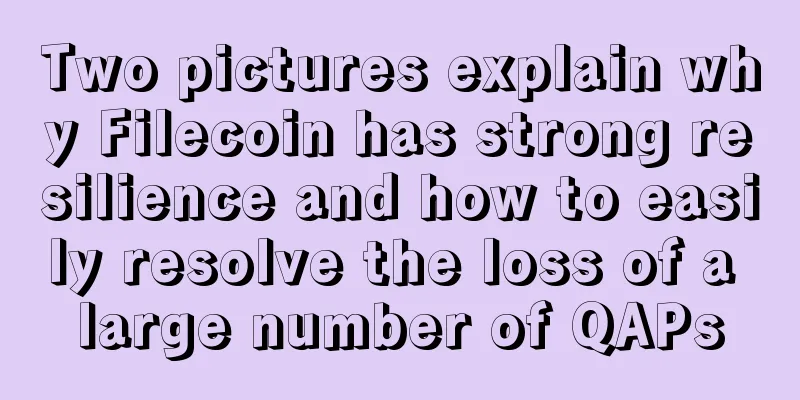Two pictures explain why Filecoin has strong resilience and how to easily resolve the loss of a large number of QAPs

|
summary
As a decentralized data storage network, Filecoin requires SP to determine QAP based on the stored data (whether it is real data) to determine the sector pledge and the amount of block rewards obtained. Because of this unique structure, we can use the following model to actually verify and see how Filecoin can recover with its strong resilience under the following assumptions of different QAP loss (large number of SP exit). We can envision two forms of QAP loss:
Before interpreting the two model result graphs mentioned above, we need to first understand the premise of this model setting. Kiran calls this model Agent-Based Model (ABM). The environment of this model implements Filecoin's cryptoeconomic mechanisms (such as the interaction of locking, vesting, minting, and token supply) and satisfies all possible scenarios as much as possible. Including: 3 SP types:
SPs have two types of behavior logic:
There are 4 more initial network states for testing:
Under the premise that the above situations are set to cover most situations, we obtained the following simulation results through the calculation and analysis of the model: (This is only a partial excerpt summarizing the whole point of view, please refer to the original text for the full model report) The above graph tests the key performance indicators (KPIs) of the Filecoin network under different SPs leaving the network. The dashed vertical line indicates the start of the simulation, and the dotted vertical line indicates the date when sectors begin to leave the network. A baseline case of constant joining using the DCA agent is also simulated to provide a basis for comparison (black dotted line) From the above figure, we can see that when the SP in the network suddenly terminates the storage contract, the network will experience a sharp drop in QAP. However, we observed that the network QAP began to recover after the termination event. This is because the increase in reward concentration leads to an increase in the FIL-on-FIL return rate. In this case, we recall the behavior logic of SPs based on ROI. In the current network situation, we can observe that participants who stay in the network will receive high FIL-on-FIL returns. Our simulation reflects this phenomenon. When SPs observe high FIL-on-FIL returns, they will take advantage of this situation and increase storage. Filecoin's network QAP will naturally recover by its characteristics, thus confirming its strong resilience. |
<<: What BTC spot ETF applications are there now? What are the approval timelines and deadlines?
>>: Binance launches new service in Latin America to transfer crypto funds directly to bank accounts
Recommend
What are the benefits of having an extremely expensive face?
It is very simple to distinguish people by their ...
What is the endgame for cryptocurrency regulation?
Author: Kenneth Rogoff is Professor of Economics ...
Look at your face to see if you are a money grabber
Look at your face to see if you are a money grabb...
What does it look like if a woman has a very pointed chin? What are the characteristics of a double chin?
The so-called cone-shaped face that is popular no...
Why do people say EOS is doomed?
There is a row of pomelo trees downstairs of our ...
The gap between your fingers reveals your personality and career
The gap between your fingers reveals your persona...
Usually, he is a philanderer in love and immediately changes into a different person
Although it is said that a woman in love has an I...
French right-wing party representatives call on the European Parliament to tighten regulation of Bitcoin
Three representatives from the French right-wing ...
Palm lines that indicate easy cheating! A diagram of the bifurcation of the love line in a woman's palm
How to interpret the forked love line on a woman’...
A girl from Beijing invests in Bitcoin: After adding 200,000 yuan to her position, she is ready to borrow another 1 million yuan
Will Bitcoin reach $20,000 by the end of this yea...
Physiognomy analysis of men with moles on their foreheads who are prone to emotional disputes
Is it good for a man to have a mole on his forehe...
What does it mean if you can't see the ears from the front of a man?
Everyone is very familiar with the ear, which is ...
What does a woman with a small mouth represent?
If a woman has a small mouth, people will also th...
What does a woman with a mole on her lower lip mean?
As for moles, everyone has them, but the location...
Bitcoin price has been on a roller coaster ride in June, but that hasn't stopped it from becoming a popular investment
【Abstract】 As more and more market participants t...









